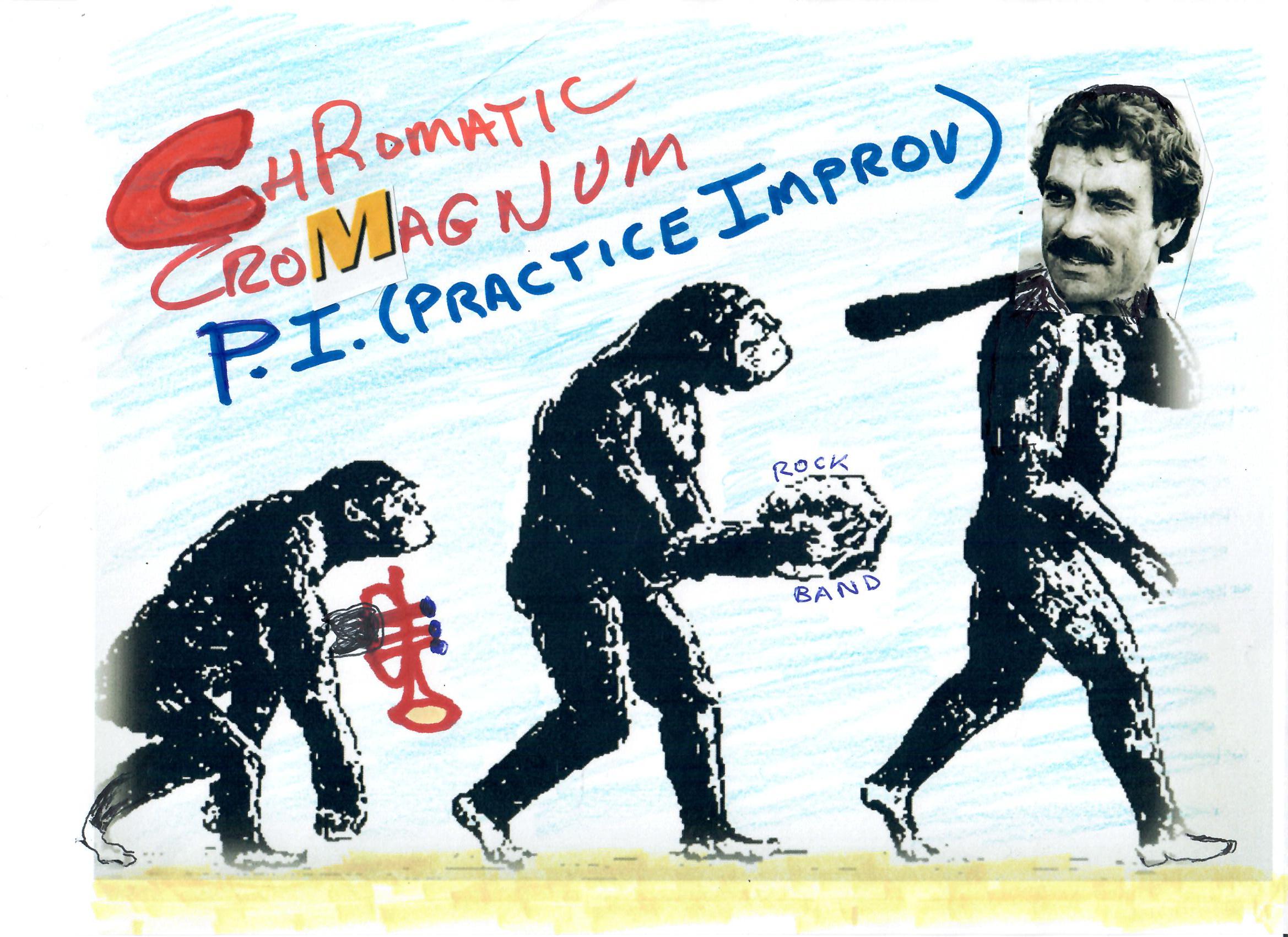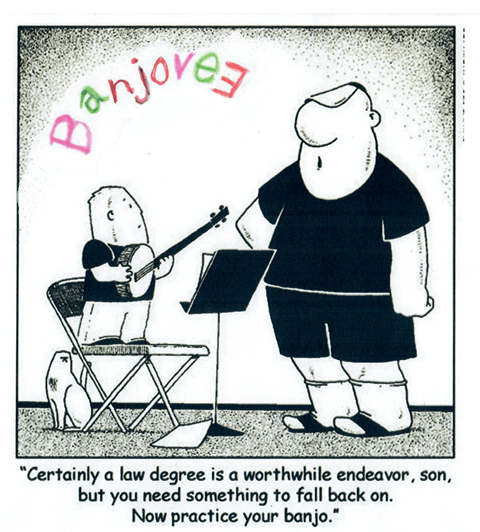Tenor saxophonist Brooklyn brought a favorite tune to his lesson. As always, we typed the changes into Band in a Box, chose a tempo and a groove, and started blowing on the tune. But Brooklyn said he was having trouble coming up with fresh ideas to play over the changes.
Tag: Saxophone
Another Blues Scale
Click here to watch the video.
The blues idiom offered early twentieth century musicians a new way to share deep emotional feelings vigorously and honestly.
A hundred thirty years earlier, Mozart had reveled in the fresh, airy lightness of the major tonality which superseded stolid Renaissance modal forms around 1600.
Periodic innovations like these keep music vibrant and invigorating. Unfortunately, too many of today’s musicians bloat their playing with endless, unimaginative, repetitive blues licks. Sure, blues licks can add a funky edge, but overuse of these clichés leads to tiresome monotony.
(And so on, and so on….Well, you get the idea!)
BLOW TILL YOU KNOW
Are you struggling to develop a personal improvisatory style or to find your unique compositional voice? Well, you’re not alone! Many musicians grapple with these dilemmas.
Perhaps my own story will help you unearth your path to musical originality.
I started playing because I love the way music sounds, the way playing the horn feels, the exhilaration of working with a great band of like-minded musicians. A couple years later, I began writing songs, just so we’d have originals for gigs and recordings. I didn’t think twice about trying to be original. On the contrary, emulating the masters was satisfying. It seemed to legitimize and validate my work.
However, about 10 years into my career, I suddenly faced an existential crisis, when nagging questions like these began keeping me awake at night:
“Is this composition any good? Is it too long? Which sections are valid and which need to be scrapped? Should that note be a Bb or an F#? Do my solos stink? What right do I even have to compose music or play the horn, when there are so many musicians out there who are way better?”
Chromatic Cro-Magnum P.I. (Practice Improv)
 Ever feel totally drained after a big gig with no steam left to practice, like a malnourished Cro-Magnon? That’s how I felt this morning, after last night’s intense concert backing up my friend presenting 14 of his complex original compositions.
Ever feel totally drained after a big gig with no steam left to practice, like a malnourished Cro-Magnon? That’s how I felt this morning, after last night’s intense concert backing up my friend presenting 14 of his complex original compositions.
What’s a person to do? Well, “one foot in front of the other,” as the old saying goes. Just start blowing long tones; dig the sound of the horn, experience the feeling of wind on reed, fingers on pearls.
Here’s what emerged after an hour or so; a little chromatic meander that caught my imagination. As harmonized in this sketch, it forms a Dorian setting reminiscent of “So What,” “Little Sunflower,” “Jeanine,” or “Invitation.” It could also have been harmonized as a ii-V progression in C major modulating to D minor.

Click on “continue reading” below to see a chart and hear the recording in all 12 keys.
Continue reading “Chromatic Cro-Magnum P.I. (Practice Improv)”
Compose, Improvise, Practice: Three Birds, One Stone!

Do you ever NOT feel like practicing? If your go-to staple is a dry method book, you’ll probably answer “yes” – if you’re really honest.
On the other hand, if you dream of becoming an inventive improviser or an innovative composer, then read on!
Continue reading “Compose, Improvise, Practice: Three Birds, One Stone! “
Discovering Your Personal Jazz Improvisational Style
Click on “continue reading” below to see the text of this video.
Continue reading “Discovering Your Personal Jazz Improvisational Style”
Pres says, “Sing me a song!”

Let’s face it, we all want monster chops. There are some great books out there to help develop technique. I work constantly on mastering lix in all 12 keys, but I never play those lix on the gig. That’s not their purpose. The reason for practicing lix is to enhance your facility on the horn and expand your musical vocabulary.
But some of those lix get so obscure, I can’t even tell if I’ve made a mistake in transposing the lick to a new key. That’s when I know the lick is too obscure!
I just got a killer deal on a great classic clarinet mouthpiece. That inspired me to do some long overdue clarinet shedding. I was trying to come up with a lick that felt melodic, one that would swing and sound lyrical, as opposed to clinical.
Let me know what you think of this one.
To see the chart for this lick in all 12 keys, press the “Continue Reading” button.
Stan Getz: A Brief History, An Appreciation
The vast recorded legacy of legendary tenor saxophonist Stan Getz still astounds the jazz community. Here it is in words and music. From his earliest days with Jack Teagarden, Stan Kenton, Benny Goodman, and Woody Herman to the phenomenal smash hits “Desafinado” and “The Girl From Ipanema” (which sparked the 1960’s bossa nova craze), to his sublime later work with pianist Kenny Barron, Stan Getz continued to galvanize the musical world with his unparalleled technique, unmistakably unique sound, and gorgeous lyricism. Take a tour with us of this amazing 40-year jazz odyssey.
Click on this link to see and hear more: https://youtu.be/pIDS5x7leYI

The Chord Committee
Many, many thanks to everyone who volunteered for The Chord Committee. Numerous excellent solutions have been proposed. In order to avoid discord, I have combined all of your suggestions into one beautiful, majestic chord. In hopes you will find the solution acceptable, the chart and recording are presented here for your approval. (Click on “continue reading” to view the complete chart.)
Got Improv?
You can learn how to improvise like a professional jazz musician! Watch this video to see how you can begin the exciting journey towards becoming a jazz improviser.
Fats Waller & Arpeggios
 Mastering arpeggios gives you yet another tool to use (in moderation) in your improv solos.
Mastering arpeggios gives you yet another tool to use (in moderation) in your improv solos.
Have you ever tried playing Fats Waller’s great tune “The Jitterbug Waltz”? Find it on Rahsaan Roland Kirk’s “Bright Moments” album. Mastering arpeggios will make that tune much easier to play.
Here’s a challenging and interesting way to master arpeggios. The idea for this exercise was suggested to me by a warm-up my talented friend Al Thompson often uses.
Click on “continue reading” for a complete chart.
Dig Jimmy Heath!
 Jimmy Heath is another master with whom I hope to become more familiar.
Jimmy Heath is another master with whom I hope to become more familiar.
Driving into a glorious autumn dawn on the way to church Sunday, I was listening to “Picture of Heath” and was particularly struck by the third chorus of Jimmy’s soprano solo on “All Members.”
I don’t usually go to the trouble of formally transcribing solos, since there are so many fine transcriptions available on-line. But Jimmy’s third chorus really knocked me out, and i felt compelled to examine the strategy, structure, and logic of this amazing 12-bar chorus. Continue reading “Dig Jimmy Heath!”
Transposing Charlie Parker’s “Confirmation” Using New Ears
A question just came in from a user of New Ears Resolution as to how he could use movable DO to transpose Charlie Parker’s “Confirmation.” (His letter is posted below.)
Continue reading “Transposing Charlie Parker’s “Confirmation” Using New Ears”
RIPPING RIFFS OR MEMORABLE MELODIES?
 Craig wrote this article for the February, 2016 issue of Saxophone Life Magazine. It appears here courtesy of SLM.
Craig wrote this article for the February, 2016 issue of Saxophone Life Magazine. It appears here courtesy of SLM.
It’s definitely impressive to hear jazz musicians improvise at incredibly fast tempos. What is, however, far more inspiring is hearing how the great masters are able to create beautifully crafted, swinging melodic lines, regardless of tempo. Continue reading “RIPPING RIFFS OR MEMORABLE MELODIES?”
Jazz Articulation, Accents, and Proper Tonguing
Some saxophone & clarinet students have difficulty with jazz articulation, because they have not learned to tongue properly. They begin each note with a constriction in the throat, which sounds as if the student were humming into the mouthpiece. The beginning of the note is fuzzy and indistinct. Continue reading “Jazz Articulation, Accents, and Proper Tonguing”
OVERCOMING FLAPPY FINGERS
From a quick viewing of YouTube video footage, it appears that Coltrane’s fingers may move further from the keys than do Bird’s. Do you agree?



